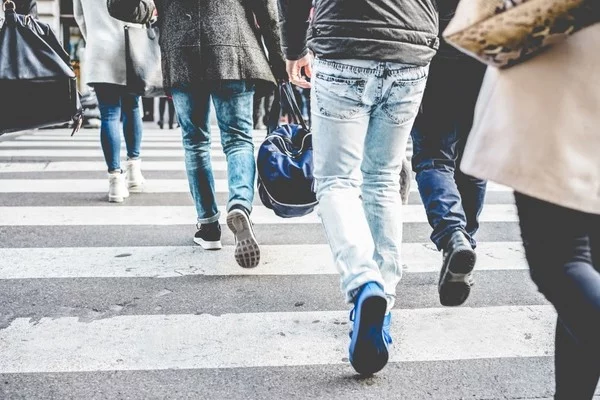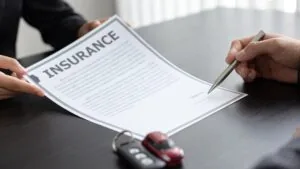
You are a pedestrian any time you use your own two feet to get from point A to point B. Obviously, most of us are pedestrians at some point, usually at multiple points in a single day. Whether you are simply walking from your parked car into a shopping center or speed walking for exercise—when you walk or run anywhere in public, Washington’s progressive pedestrian safety laws are there to protect you. And with good reason.
Pedestrian Safety Data
If you look at national figures, they indicate that the number of pedestrians injured or killed each year is on the rise. The National Highway Traffic Safety Administration (NHTSA) periodically releases data on national pedestrian safety. If you compare the 2014 data (released in 2016) with the 2018 data (released in 2020), you see an alarming trend. Table 1 of the NHTSA 2014 datasheet shows that from 2005 up until 2014, the total number of traffic fatalities nationwide declined while the number of pedestrian fatalities hovered between 4,000 – 5,000 deaths per year. However, the NHTSA 2018 datasheet shows that in 2015, pedestrian fatalities broke the 5,000-mark. From 2015 to 2018, the number steadily increased to a record-breaking 6,283 pedestrian fatalities in 2018. Therefore, it is easy to see why our state takes the safety of pedestrians and other “vulnerable users” of our streets very seriously. Washington law defines vulnerable users as essentially anyone on or near our roadways that is not in a vehicle—including pedestrians, bicyclists, scooter riders, and people in wheelchairs (whether motorized or not). In fact, the Washington legislature fashioned a whole host of laws establishing guidelines and increasing penalties for drivers who commit traffic infractions that result in harm to any vulnerable user of our roads.
Basic Pedestrian Safety Laws
As Seattle’s ever-increasing population crowds our sidewalks and roads, it is more and more important to understand pedestrian safety laws. The law states that drivers must exercise due care and diligence to avoid collisions with pedestrians near any roadway. Here are a few other basic Washington pedestrian safety laws that every driver and pedestrian should know:
- Pedestrians must obey all traffic signals and devices unless an officer directs them otherwise;
- Pedestrians must use sidewalks when available;
- Drivers must yield to any pedestrians on a sidewalk;
- If sidewalks are not available, pedestrians must walk on the shoulder facing oncoming traffic (left side of the road); and
- Pedestrians are prohibited from darting or bolting into traffic so as to make it difficult for a driver to stop.
Now let’s turn to some particularly dangerous scenarios that can happen at intersections and crosswalks.
Two Types of Crosswalks
A crosswalk is essentially any intersection. Any time one road intersects with another, the flow of traffic from two different directions comes face to face—and accidents might happen. For pedestrians, it is illegal to cross the street anywhere but at a crosswalk because doing so is dangerous. This is called “jaywalking.” If you choose to jaywalk, you must yield to oncoming traffic. If police observe you jaywalking and failing to yield, they can issue a citation for this dangerous behavior. For the sake of clarity, let’s address the two distinct types of crosswalks: marked and unmarked.
Pedestrian Crossing Signals at Marked Crosswalks
A marked crosswalk has painted lines on the road that denote where it is safe to cross. Some of these intersections are “zebra-striped.” This means they have slanted, diagonal lines that are easier for drivers to see. These road markings can alert drivers to potential pedestrian crossings even when no other traffic devices are present.
Pedestrians must learn what the signals at marked crosswalks mean so that they properly cross the street. The Manual on Uniform Traffic Control Devices (MUTCD) explains the relevant symbols.
Person walking
If you see the outline of a person walking, this means that it is safe to cross the street now.
Upraised Hand
If you see the steadily lit outline of an upraised hand, this means “stop” or “don’t walk.” If the upraised hand is flashing, it is a warning sign that the “stop” sign is about to take effect. Think of it as a yellow caution light or a countdown to “stop.” So if you have not stepped into the crosswalk when the flashing starts, do not do so now. But if the signal changes from solid to flashing while you are in the process of crossing the road, this means you have about eight seconds to get to the other side of the road safely.
Unmarked Crosswalks
An unmarked crosswalk is essentially any intersection that does not have painted markings to alert drivers. As a general rule, motorists should always assume that every intersection is a crosswalk and proceed with caution, whether markings exist or not.
Intersection Rules
The laws that dictate things like right-of-way can be confusing for pedestrians, bicyclists, and drivers alike. So let’s look at some rules regarding intersections that everyone should know.
- Whoever arrives first at an intersection with a stop sign has the right-of-way (whether pedestrian, bicyclist, or car);
- Drivers are responsible for being alert and watching for pedestrians in and around intersections;
- When pedestrians are already in an intersection, drivers must yield the right-of-way;
- Even if an intersection has no stop sign, approaching drivers should slow down and prepare to stop instantly if necessary; and
- Pedestrians must always wait for the signal to change to “walk” before entering any intersection with such a device.
Failing to follow these rules can result in a citation and fine or, worse, an accident. So be careful to follow the rules whether you are driving, walking, or riding your bike.
We Protect Your Rights
Pedestrian accidents can change your life in a single moment. The experienced and compassionate Seattle personal injury attorneys at Brett McCandlis Brown & Connor, PLLC, help pedestrian accident victims get the compensation they need to move on with their life. Don’t let the person who injured you deflect responsibility for the harm they caused. If you or someone you love has suffered because they were hit by a driver, speak to our seasoned lawyers about your legal options as soon as possible. Give us a call for a free consultation, or contact us online today.
